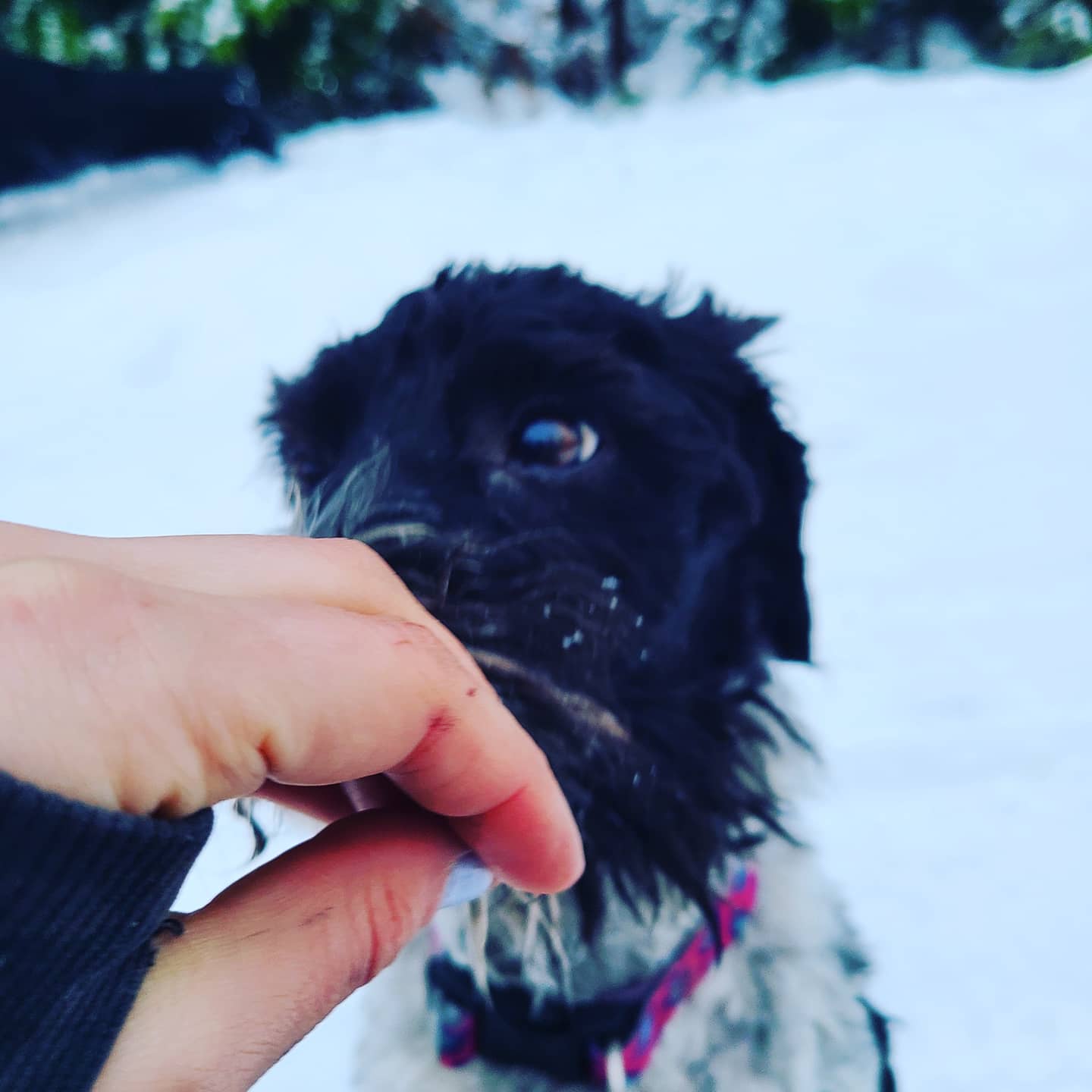I want to tell you Billy’s story. Working at a vet clinic, we occasionally (and sometimes more than occasionally) have animals that owners want to surrender to us; whether they just don’t want them, or they have medical issues the owners can’t afford. We, as a clinic, don’t take surrenders or do rescue work, but we will take the animals and facilitate their surrender to our local shelter. We are a small community and the shelter isn’t funded by the province. Thusly, it isn’t unheard of for me to take home animals who are surrenders who have behavioural issues, or I just feel up to taking in an attempt to lessen the burden on our local shelter.
In late October, on my day off, I got a message from a coworker. There was a dog she thought I might want to take; we’ll call him Billy. His owners wanted to book him in to be euthanized because he was aggressive when they tried to groom him; as a Havanese, he needed pretty regular grooming, and it was near impossible for them. They had prescription drugs for him (oral Acepromazine) to give to try to groom him and even through it he would bite.
Sure, I said, I’ll talk to them. I reached out and asked some typical intake questions, and got pretty standard answers; he’s a good dog, we love him, but it is too much. We’re retired and we can’t manage him. I agreed to take him; desensitization and counterconditioning to handling isn’t out of my comfort zone and, even if he was beyond ever being confident being groomed, I was sure there was a family out there who would take a sweet lap dog with the understanding that every few months they would have to pay a couple hundred dollars to get him sedated at the vet and shaved.
And so, in early November, on a Saturday, the owner showed up at the clinic and passed him off to me. We chatted for less than 5 minutes – she was pretty obviously checked out at this point from this dog. He was in a crate (one that, I would argue, was about two times too small). She apologized for the condition he was in; I reassured her I wasn’t judging. I knew he was coming to me for handling issues with grooming, so I knew he wasn’t going to be well groomed. I offered to send her updates and photos if she wanted, but she said she preferred a clean break. She said something to the effect of, “We knew when he was 12 weeks old we were in over our heads, but we figured we would keep him and see how it went, and somehow five years passed.” After handing me the crate, a bag with a dog bed and some toys, and a folder with his paperwork (CKC registered purebred 5 year old neutered male Havanese from a great breeder), she left.
Back in the clinic, I figured, first things first; let’s get Billy out of his crate and have a look at him. Shell-shocked, he let me clip a leash onto him and tether it to a door handle.
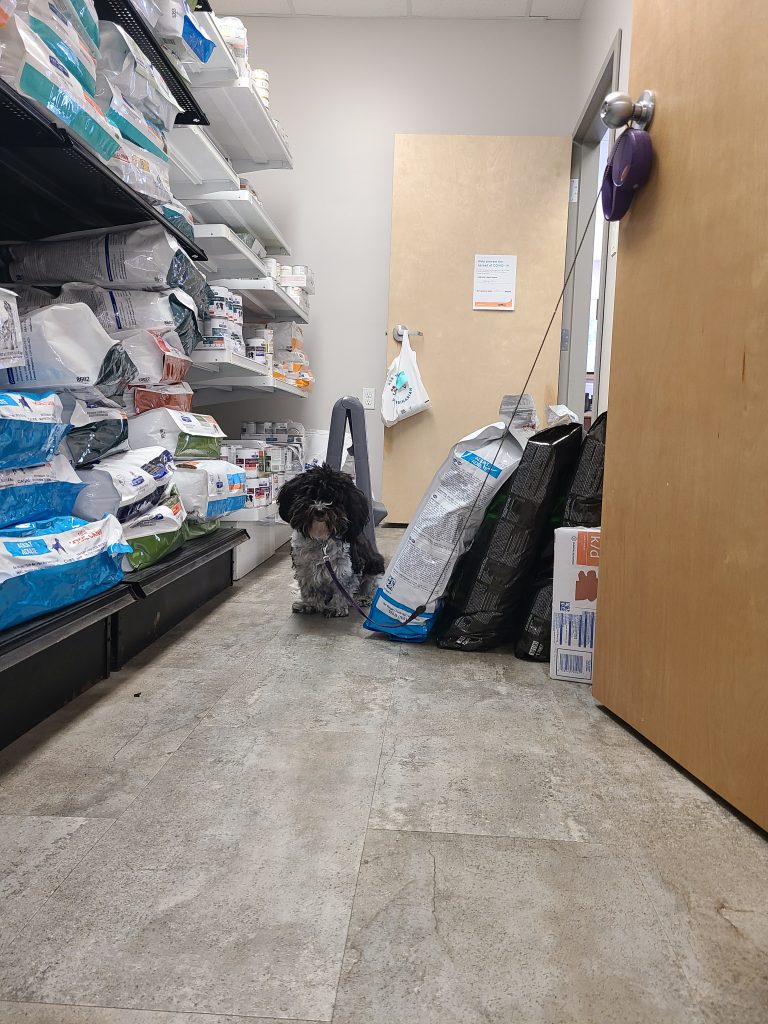
Billy was in rough shape. His coat was incredibly matted and so long in front of his eyes that he couldn’t see properly. He was covered in fleas (I promptly tossed his bed and toys), and his nails were so long they were growing into the pads of his feet (though, I wouldn’t figure that out until he was sedated).
I grabbed an oral flea treatment and tossed it at him; they’re flavoured like treats so I hoped he would just eat it. No dice; too stressed, he would not even consider it. No problem; I grabbed a topical treatment that just goes on the back of the neck. I walked over to apply it, and Billy barred his teeth and started furiously trying to attack me. Viciously. My first clue (well, second, if we count that the owners were wanting to euthanize as the first) that this was more than just a sensitivity to handling kind of case.
Thus began an epic battle that was FAR more coercive than I am comfortable with to get an injectable sedative into Billy. Not grooming him was not an option at this point, so it had to be done. Thank god for my vet, Jaini, who is a wonderful vet and a graduate of Dr. Friedman’s LLA course and just an all around BAMF. She came up with a strategy: I made a towel into a sort of noose/sling, and managed to get it around Billy’s neck. I then closed his head – holding the towel and wearing gloves meant for handling raptors – in a door, and Jaini snuck around into the room and injected the sedative into the muscle in his back. We then closed him in the room to let him cook, so to speak.
Once sedated, I applied the tick treatment and Jaini and I got our clippers and went to town. Even sedated, if we got near his face, Billy would snap and snarl, to the point we couldn’t get a muzzle on him. We ended up knotting a piece of gauze around his muzzle and just working quickly. He ended up with a lopsided and not terribly attractive groom, but at least he could see, the mats were gone, and his nails were a reasonable length.

I was hopeful that being (physically) well again and with some time to decompress, he would mellow out into the dog I was told I was getting – sweet but bad at grooming.
That first night, Billy was vicious. I couldn’t get near him, I couldn’t get a collar or even a slip lead on him. I debated which was the lesser of the evils – leaving him in his crate even if it meant peeing himself – knowing that would cause physical and psychological discomfort – to decompress, or forcing him out to pee but in doing so forcing proximity to me on him. I chose the latter, simply knowing that if he ended up covered in urine and feces, I had to way to bathe him or clean him at his point. I put on gardening gloves and noosed a slip lead around his neck and took him out. Once he went pee, I promptly put him back in his crate and closed him in a quiet room for the night. He wasn’t taking food. Then, I took to a trainers forum to brainstorm, realizing this was more than I’d bargained for. After a couple hours, I offered him a dental chew through his crate and, thank god, he took it. A tiny ray of hope.
I came up with a plan: meds to decrease his stress and make him more manageable (a hefty dose of trazadone), and I built him a pen in our yard out of chicken wire. And that was basically what our first few days looked like: carry his crate into his outdoor pen, unlock the door and then jump out of the pen, leave him be for a while, then throw treats into his kennel and when he went in to get them, shut the door and carry him back indoors. It was worth a try, I figured. Worst case scenario, I’d have to euthanize him anyways, and he would be no worse off than he’d come to me.

Slowly, over that first week, I would sit on the ground in his pen, and I would scatter feed his kibble in the grass. I still couldn’t get a collar on him, but something wonderful happened – he started to be curious about me, he started sniffing me, and – through the magic that is the retreat and treat game – he started taking treats near me and eventually from me. Then, he started seeking attention out from me. I still couldn’t get a collar or leash on him, but he would actively seek pets and even climb on my lap, and let me pick him up without too much fuss. I would tell him, “I am going to pick you up now, okay?”, and then gently pet his back, and then scoop him if he didn’t show signs of aversion. If he walked away, I’d let him, give him a few minutes, and try again. This is a dog who had never had self advocacy in his life – he is a small dog who was pinned and muzzled and drugged and forced into handling – and I was trying very hard to give him not only that feeling of control, but also help him to relearn some of those early warning signs rather than jumping straight to biting when he was uncomfortable.
I had upgraded him to a much bigger crate, but he was still in it more than I’d like; however, with 3 other dogs, 3 roommates, and 5 cats, I couldn’t give him too much freedom yet, for his own safety and everyone else’s.


Time passed. Billy got more comfortable. Billy learned to trust me. Billy earned my trust, and got to meet the other animals and my roommates. Billy showed amazing adaptability and improvement. Grooming was still off the table, and he required supervision when with others, but he was happy. After almost two months, I decided to give him a shot at finding a home.
I posted an ad for him. I was very clear about his pros and cons, including stating that he would not be adopted into a family with children – any dog with a bite history, I’d likely not trust in a family with children, but especially one with handling issues. His new family would sign that they were aware of his bite history. They were aware of his handling struggles, and I would provide them with guidance – namely, I ended up sending him with handouts on the retreat and treat game, and consent test. We talked about quiet decompression time, avoiding coersion, listening to body language and early warning signs. If anything happened they would return him to me, rather than rehoming him themselves. They knew he took Trazadone and the cost associated with it. And, importantly, they were aware that they would have to pay a couple hundred dollars every few months to get him sedated and groomed – and as such, they knew he might never look like a show-quality Havanese.
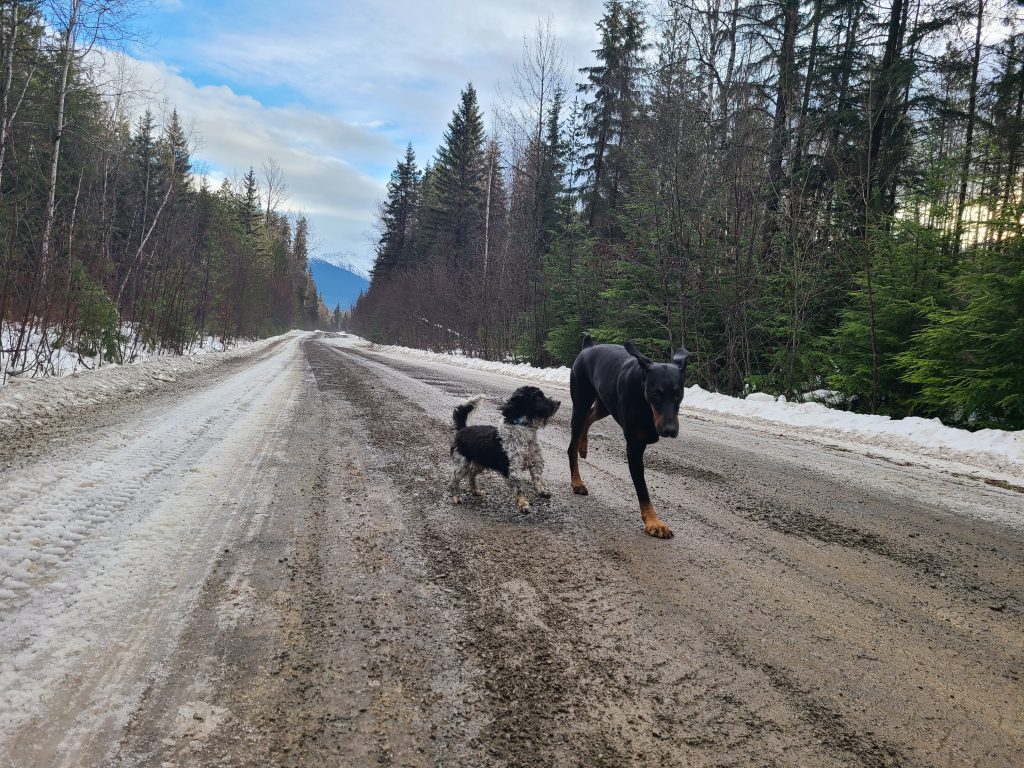
A few applications came in. Not tons, but a few. Everyone I followed up with I was very clear about his struggles – and his charms, that I had learned to love over the past months. I picked one – a retired couple, living about 2 and a half hours from me; they said all the right things. A thing I know to be true though: people will say a lot of things when they want an animal, and people underestimate behavioural issues – especially when it is a small breed lap dog. So we agreed: I’d drive him to them for a meet and greet, and if it went well, they could have him on a two week trial. I was cautiously optimistic. “Sink or swim, buddy,” was my general attitude. If he could thrive, wonderful; if he couldn’t settle into a home that wasn’t mine, then he couldn’t safely be rehomed.
Upon arriving at the new home, he did alright. He sniffed around, the owners seemed nice, he took treats from them, let them clip his leash on, etc. So, I left him there, and hoped for the best.
I’m not going to get into the details of that home, but they had expectations of Bailey that weren’t realistic. More importantly, he tried to bite them – when I asked why, she said she was trying to brush him. “He’s a Havanese,” she told me, like I was stupid. “They need to be brushed.”
I was beyond frustrated. Instead of giving up, Jaini and I decided to offer a trial of different meds they could try to give him to brush him at home, occasionally. They refused to try it. So, I went to pick him up and bring him home again. The whole drive to get him, I worried: was I going to have to euthanize him now? When I picked him up, I asked very clear questions, and they reassured me that he was so good, so sweet, and everyone loved him, but they can’t handle a Havanese that they can’t brush. While I was livid inside – I felt I had done everything I could to be clear with his needs and expectations, and they ignored me – I thanked them, returned their adoption fee, and took him home. I cried, and then I decided that if what they said was true, I could try to rehome him again, to someone who understood the grooming needs.
I reached out to a backup home I had lined up. I explained he had been returned, I explained clearly why he had been returned, and I asked if they were still interested. They were thrilled. I offered a meet and greet to see how they liked him in person; they said a meet and greet would be great to see if he liked them in person.
I swear to you, it was kismet. Love at first sight. I took Billy to their home, and they’d been shopping. They had bought him bones and toys, a dog bed, everything. Billy sniffed them and put his paws on them and made himself at home. He took one of the bones and went to chew it on the bed they’d bought him; he grumbled a bit when the new owner went to pet him while he had his bone, and instead of getting upset or any number of ways she could have reacted, she was perfect: “You’re right, that’s your bone! I shouldn’t bug you while you’re eating.”, and she backed away.
I left him there, with the same waiver and adoption paperwork, same training plans, and the same 2 week trial offer. The next day, they showed up with a card thanking me for their new family member, the adoption fee, and said, “I don’t think we need two weeks.” They’re the ones who gave him his name: Billy. I’ve used it for this story since it was his name in the home he was happiest in.
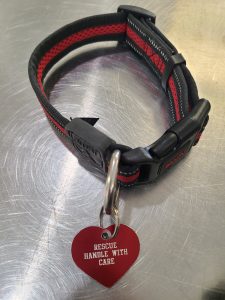
We kept in touch. They were doing well with him, but there were hiccoughs. We developed some leash reactivity, so we talked through the engage disengage game. He would occasionally snap at them if something happened, but they knew to give him space. He had one no-good-very-bad-day that we wrote off as a fluke and gave him some time to decompress. Nothing crazy, just more reactive and snarly than normal. We chalked it up to trigger stacking as a few things had been going on, and he was back to himself the next day. I gifted them an Adaptil diffuser, and overall, he was happy and so were they. It just seemed to fit.
Then, a small struggle began, that slowly became a bigger one. Billy started refusing to take his meds. Off his meds, or even on a decreased dose, he wasn’t manageable or happy. But getting them into him was a struggle. Originally he took them in pieces of sausage, then refused, then Pill Pockets, which worked for a while, then wet food, then, then, then, then… and eventually, getting his pills into him became near impossible.
And then, I got some panicked messages. While trying to pill him, Billy had bitten the owner down to the bone. It landed him in the hospital, needing sutures and a tetanus shot. They couldn’t get his pills into him. Billy was going into withdrawals and shaking, and they were scared. He’d been with them almost two mostly happy months at that point.
I went and picked him up. He was happy to see me. He wagged his tail and gave me kisses. His owners were crying, and so was I. “What are you going to do with him?”, they asked.
“I’m going to euthanize him.” I answered.
They started crying even harder. “We knew you were going to say that,” they said. They debated coming along, but didn’t have the heart for it. I told them it was okay: no one deserved to die alone, and I’d be with him. He liked me and was comfortable with me. It was okay.
Everyone was sorry. They were sorry; I was sorry. I was sorry for a lot of things. For introducing them to him leading to this heartache, for putting them in danger, for not being good enough to get Billy manageable. I could not rehome him again after a bite like that and, frankly, they were the perfect home, and if he couldn’t thrive there, he wouldn’t anywhere. I couldn’t keep him; if I kept every behavioural case that came across my desk I’d have a zoo. There was no good option.
I thanked them for giving him a few good months. Billy had, thanks to us, a few good months of happiness and comfort and minimal coercion and self advocacy and control. Then I took him, we drove to the clinic, and I gave him pets and liver treats. I warned the vet that he was a bite risk and to “please be like a ninja and sedate him quickly while I hug him and go heavy on the sedatives” but, to my surprise, he was on his best behaviour. She gave him the shot and he didn’t flinch, just kept cuddling me. In fact, he was so good that one of my coworkers said, “Are you sure he needs to be euthanized? He seems so good!” And he was. Most of the time. With me.
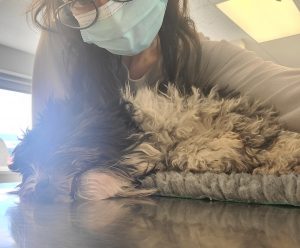
Then I cuddled him while he got sleepy. Then, we euthanized him.
Then I went home, drank an entire bottle of wine, and cried myself to sleep, while introspecting on the string of hearts that were left broken in his wake.
The things that whirl around in my mind after euthanizing him…
Billy wasn’t born broken; he was failed by humans. I’m not saying there is no such thing as a dog who is just wired wrong, but most of them aren’t. Most of them don’t have needs met or have traumatic experiences or, occasionally, have undiagnosed medical conditions that contribute to aggression. Billy had good genetics – traceably so, through his well respected breeder. Billy was a product of passive neglect and, likely, a lack of proper early socialization. I don’t think his original owners were evil; I think they didn’t know better and just kept on keeping on until it became painfully clear they were in over their heads, and at that point, it was too late.
Could Billy have been rehabilitated with more time and resources? Maybe – he did show drastic improvement over the 5 months I knew him. Who knows. I can’t tell the future and I’m not magic. No dog training is magic. But the problem with rescue work is that there are always too many dogs and not enough time or money. If I had kept Billy, at even greater expense than I’d already put in (he cost me, give or take, $600 in the time he was with me), what would I do when the next one rolled around, or the one after that? Rescue workers and trainers can’t keep them all, and there aren’t ever enough qualified homes with the right criteria for difficult dogs. Billy went peacefully, and his final owners now have the space to rescue another dog who needs them, and I have the space to help the next dog who needs me.
That doesn’t make it hurt any less, but it is true.
The biggest way to create change for dogs is that education. Early. Responsible ownership and accessible training.
And empathy; for each other, and for the animals. No one gets into this industry because they don’t love dogs.
Lastly, I want to share some resources on behavioural euthanasia, for those who may be struggling with a Billy of their own.
- I did a talk on the Dog Training 101: Community Forum about behavioural euthanasia. You do need to be in the group to watch it.
- Losing Lulu is a Facebook support group for owners who lose pets to BE.
- Dr. Chris Pachel on Drinking From the Toilet regarding BE

